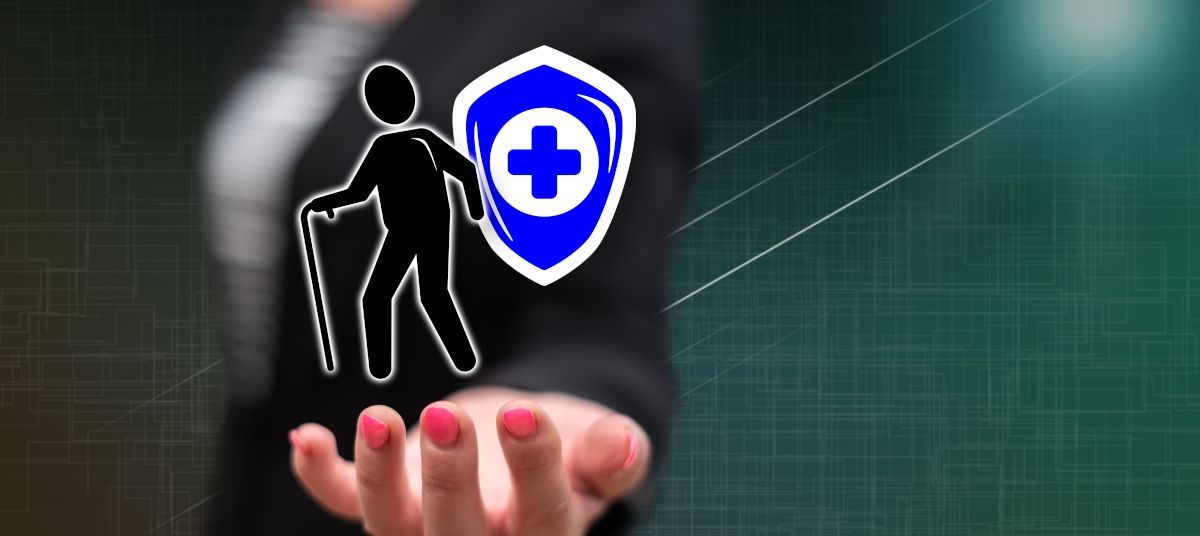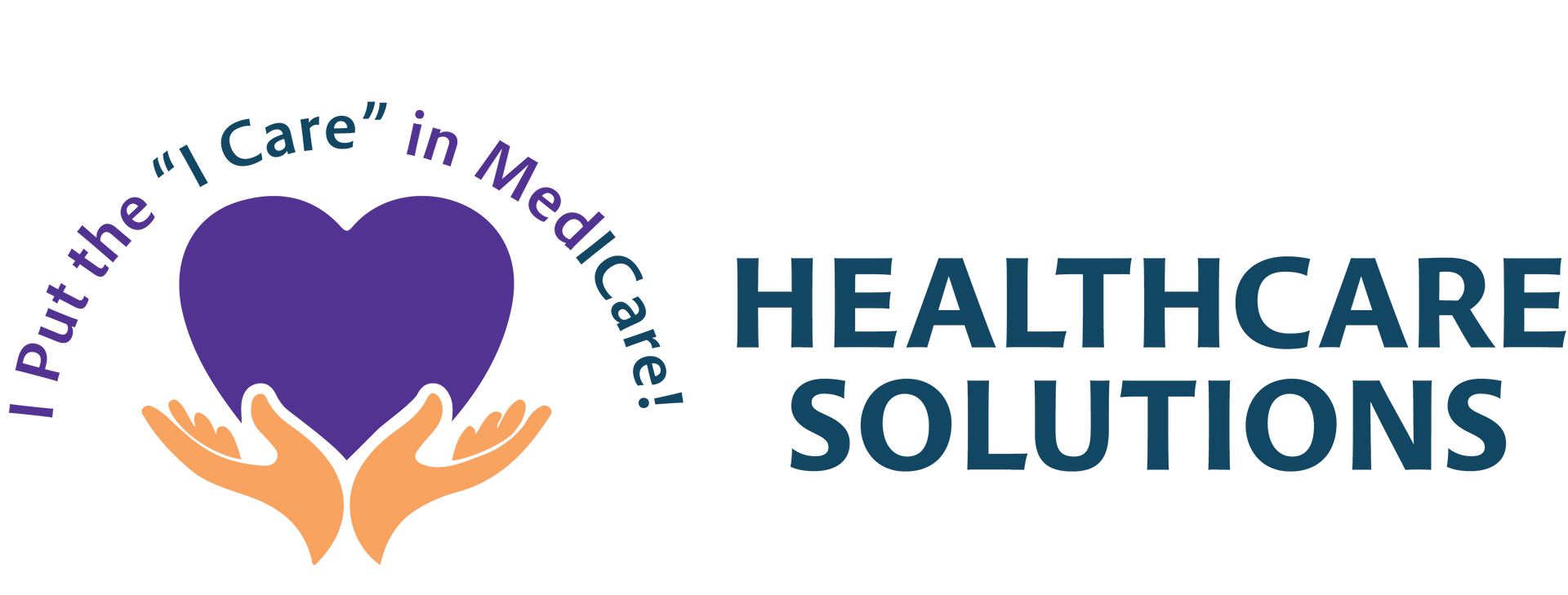BLOG
Check Out Our Health Insurance Blog

September 13, 2023
We all know it’s essential to stay hydrated during the summer months. But did you know it’s just as important to keep hydrated during the winter? Despite the colder temperatures and lower humidity, our bodies still need water to function properly. The dry air and indoor heating can make us even more susceptible to dehydration during the winter months. Symptoms of dehydration Dehydration can cause a range of symptoms, such as dry skin, fatigue, headache, and constipation, and even make you more prone to getting sick. These symptoms can be especially concerning during the winter months when flu and colds are more common. Why do we tend to drink less water in the winter? Many people drink less water in the winter because they don’t feel as thirsty. But it’s important to remember that thirst is not always an accurate indicator of our hydration levels. Additionally, many people tend to consume more dehydrating fluids, such as alcohol, caffeine, or hot chocolate, during the winter months. How much water do we need? It’s important to drink enough water every day to stay hydrated. The exact amount of water needed can vary depending on a person’s age, gender, weight, activity level, and other factors. Still, a general guideline is to drink at least 8 cups of water per day. It’s also a good idea to be mindful of your water intake and drink water throughout the day, rather than trying to drink a lot of water all at once. Fluid intake other than water Drinking water is one of many ways to stay hydrated. Consuming fluids like milk, juice, herbal teas, and soups can contribute to your hydration. Eating fruits and vegetables that have a high water content, like cucumbers and watermelon, can also help. Staying hydrated is critical year-round, and the winter months are no exception. Paying attention to your hydration levels can help keep your body healthy and functioning properly during the coldest months of the year.

September 13, 2023
Starting a fitness program can be a great way to improve your physical and mental well-being, but it’s also easy to fall off track. Here are some steps you can take to be successful with your fitness program: Set specific and realistic goals: The first step in any fitness program is to set specific and realistic goals for yourself. These could be related to weight loss, muscle gain, or increasing your overall fitness level. Make sure your goals are measurable and achievable within a specific time frame. Create a plan: Once you have set your goals, create a plan to achieve them. This should include the types of exercises you will be doing, the frequency and duration of your workouts, and any specific equipment or facilities you will need. Make it a priority : Fitness should be a priority in your life and be scheduled into your daily routine. Set aside specific times of the day for your workouts, and stick to your schedule as much as possible. Mix it up : Doing the same workout routine day in and day out can get boring and can also lead to plateaus in progress. Mix it up by trying new exercises, different workouts, or joining a fitness class. Be consistent : Consistency is key when it comes to any fitness program. It’s important to stick to your workout schedule and make sure you’re progressing. Even if you miss a workout, don’t let it discourage you. Just get back on track as soon as possible. Get a workout partner : Having a partner can help you stay motivated and accountable and make your workout more fun. You can also get a personal trainer or join a fitness community for support and guidance. Track your progress : Keeping a record of your progress is crucial in determining if you’re on track to reach your goals. Use a fitness tracker or log your workouts and measurements to help you see how far you’ve come and what you need to work on. Rest and recovery : It’s important to remember that rest and recovery are just as essential as working out. Make sure you get enough sleep and take rest days to let your body recover. Remember that starting a fitness program is a journey, not a destination. The most important thing is to be consistent, stay motivated, and be patient. Dedication and hard work can help you achieve those fitness goals that may have eluded you in the past

September 13, 2023
With an empty nest and retirement just around the corner, you might consider downsizing your home. Preparing for your next move and downsizing offers you the opportunity to declutter. Living a decluttered life offers numerous physical and mental health benefits. For example, those who live with less “stuff” tend to carry less stress, have more space, improve their focus, and achieve more productivity. But downsizing your home can be a daunting task. With the right approach, however, it can be a stress-free and even enjoyable experience. Here are some steps you can take to make the process as smooth as possible: Set a goal : Before you begin, set a goal for yourself. This could be decluttering a specific room, a certain number of items, or a particular category of items (such as clothes or books). This will give you a clear target to work toward. Start small : Don’t try to declutter your entire home at once. Start with a small area, such as a single drawer or a closet, and work your way up. This will help you to avoid feeling overwhelmed. Make three piles : As you go through your belongings, make three piles: keep, donate, and throw away. This will make it easier to decide what to do with each item. Be ruthless : When decluttering, it’s essential to be honest with yourself about what you really need and what you can do without. For example, if you haven’t used or worn something in the last year, it’s likely that you don’t need it. Take before and after photos : Take photos of the room or area you’re decluttering. before and after. This can help you to see the progress you’ve made and also act as a reminder of how far you’ve come. Organize what’s left : Once you’ve decluttered, take the time to organize what’s left. This can include sorting items into categories, putting them in labeled containers, or finding a new space for them within your home. Maintain your progress : Decluttering is not a one-time event; it’s an ongoing process. Make a habit of regularly going through your belongings and getting rid of anything you no longer need. By following these steps, you can make the process of downsizing and decluttering your home as smooth as possible. Remember to take your time, be open-minded, and set clear and reasonable goals. By planning ahead, downsizing can be an excellent opportunity for the next chapter in your life.

September 13, 2023
Valentine’s Day is a time to celebrate relationships with significant others. But it’s also important to remember to love and celebrate yourself. While spending time with a romantic partner during Valentine’s Day is a wonderful experience, don’t forget to practice some self-love and appreciation as well. Here are seven ideas to do just that on Valentine’s Day: Treat yourself to a spa day : Whether at home or at your favorite local retreat, take a relaxing bath, get a massage, and pamper yourself with a face mask or facial. Enjoy a special meal : Valentine’s Day often means a romantic dinner. But who says you can’t indulge in your favorite meal on your own, even if that means devouring a hearty breakfast, seeking the perfect lunch sandwich, or heading to your favorite food truck. Be creative : Expressing your creative side is a fantastic way to let your inner self share love with the world. Paint, write, draw, or create something that brings you joy. Just relax : Take a nap, read a book, or meditate. Doing something that brings you peace and relaxation is a great way to show yourself love and care. Go on a solo adventure : Don’t want to stay inside all day? Go on a hike, visit a museum, or take a trip to a new city – all at your own pace. Give yourself a present : Buy something you’ve been desiring for a while, or make a special purchase that has been put off for too long that makes you feel good. Write a love letter to yourself : Write down all the things you love about yourself, your family, and your life. The practice of writing down the things that are important can fill us up with love, gratitude, and joy. Self-love is a crucial part of overall well-being and happiness. By showing yourself love on Valentine’s Day, you can build a foundation to carry you through the rest of the year. So, carve some time out on Valentine’s Day for the most important person to love – YOU!

September 13, 2023
One of the most important, yet complex products you will purchase as an adult is health insurance. But with a nearly endless list of options, individual state laws to abide by, and constant changes in what insurance companies offer, choosing the right health insurance plan has never been more challenging. That’s why we’ve prepared this guide to purchasing health insurance for millennials. Employer-Sponsored In the world of health insurance, employer-sponsored policies reign supreme for most individuals. Many employers provide health insurance coverage at no cost to their employees or for only a fraction of the actual premium. Yet, there are also a couple drawbacks to consider before enrolling. Let’s look at the pros and cons of employer-sponsored health insurance. Pros: Cost: Employer-sponsored health insurance is usually the most affordable option, as employers often contribute to the cost of the premium. Convenient: Having your health insurance coverage through your employer makes it easy to enroll and manage your coverage, with any premiums automatically deducted from your paycheck. Comprehensive Coverage: Many employer-sponsored health insurance plans offer comprehensive coverage, including doctor visits, hospital stays, prescription drugs, and preventive care. Cons: Limited Provider Network: Some employer-sponsored health insurance plans have limited networks of doctors and hospitals. This means you may lose your primary doctor by switching to an employer-sponsored plan. No Choice in Plan: With employer-sponsored health insurance, you often have limited options for choosing your insurance plan and may not be able to select the plan that best fits your needs. Job Loss: If you lose your job, you may also lose your health insurance coverage, meaning that you will need to find alternative coverage until you are able to obtain a new job with healthcare benefits. Regarding job loss, there is an option to purchase coverage under COBRA. This coverage extends your employers’ health insurance coverage for up to 18 months. However, you are responsible for the entire premium, which is typically much higher than other health insurance options. Short Term Health Insurance If there is one thing millennials are known for, it might be job hopping. According to Gallup, 1 in 5 millennials have changed jobs in the past year. This means losing employer-sponsored health insurance. A short-term health insurance policy can fill in the gap until you land your next job with healthcare coverage. Pros: Cost: Short-term health insurance plans are generally more affordable compared to traditional health insurance plans. Flexibility: These plans offer more flexibility in coverage period and plan options. You can choose the length of coverage that fits your specific needs. Speed: Traditional insurance requires medical underwriting and can take more than a week to obtain. Short-term health insurance plans can often be purchased on the same day, providing coverage immediately. Cons: Limited Coverage: Short-term health insurance plans generally offer limited coverage compared to traditional insurance plans. They may not cover pre-existing conditions or specific medical procedures. Renewal: These plans often do not renew automatically, which means you will have to reapply for coverage once the plan expires. No Obamacare Protections: Another downside to short-term health plans is that they are not required to cover essential health benefits, and they are not subject to the same consumer protections as Obamacare plans. A short-term health insurance plan is a good choice if you are looking for a quick, cost-effective solution while in between jobs. However, they come with limitations and drawbacks that must be considered before purchasing a policy. Catastrophic Health Insurance If your new employer doesn’t offer health insurance, or you’ve decided to step out on your own, cost becomes a much bigger concern. One option is a catastrophic health insurance plan. These plans provide a safety net for the worst-case scenario, but expect to pay more initially for care in the form of deductibles, copays, and coinsurance. Pros: Cost: Besides short term medical plans, catastrophic health insurance policies tend to be much more affordable than traditional health insurance plans. This makes these policies a good option for those on a budget. Coverage for Big Medical Expenses: The purpose of these policies is to provide coverage for major medical expenses. This includes hospital stays, emergency room visits, and most surgeries. Coverage Gap: Catastrophic insurance policies serve as a financial backstop for those who are uninsured or underinsured, offering coverage for major medical expenses that might otherwise be unaffordable. Cons: Limited Coverage: Catastrophic health insurance policies provide limited to no coverage for routine medical expenses, doctor visits, prescription drugs, and preventive care. High Deductibles: These policies often come with high deductibles. This means you will pay out of pocket before insurance kicks in. No Obamacare Protections: Just like short-term health insurance, many catastrophic insurance policies may not be subject to the same consumer protections as Obamacare plans. Catastrophic health insurance policies are a good option for those looking for affordable coverage for major medical expenses. However, it is critical to be aware of their limitations and drawbacks. Medicaid Medicaid is a government-sponsored program providing health insurance to low-income individuals and families. If your time in between jobs lasts for more than a year, and you have a limited income, you may be eligible to qualify for Medicaid coverage. Pros: Cost: As a government-sponsored program, health insurance coverage is offered for no cost in most cases. Comprehensive Coverage: Medicaid covers a wide range of medical expenses, including doctor visits, hospital stays, prescription drugs, and preventive care. Obamacare Protections: Medicaid is subject to the same consumer protections as Obamacare plans. This means it must cover essential health benefits and cannot discriminate against individuals with pre-existing conditions. Cons: Eligibility: To be eligible for Medicaid, you must meet specific income requirements, which can vary from state to state. Limited Provider Network: Medicaid plans often have limited networks of doctors and hospitals. This may mean not having access to your current physicians. Long Waitlists: In some states, there may be long waitlists for Medicaid coverage, requiring you to wait months before you become eligible. Medicaid should be viewed as an option of last resort due to its limited coverage and lack of choice when it comes to access to doctors. However, for those with little to no income, Medicaid serves its purpose of providing coverage when other options may not be within reach. Individual Health Insurance Individual health insurance plans, whether purchased through a health insurance exchange or from the private market, offer the widest choice of options for your coverage needs. With so many choices, it is important to spend time reviewing each plan carefully before making a purchase. Pros: Choice: With a private health insurance policy, you can choose from a variety of insurance plans and select the one that best fits your needs and budget. Comprehensive Coverage: Many private health insurance plans offer comprehensive coverage, including doctor visits, hospital stays, prescription drugs, and preventive care. Additional Coverage: Supplemental coverage may also be available with a private health insurance plan. including dental and vision coverage. Cons: Cost: Private health insurance policies can be expensive. Depending on your income, plans purchased through a health insurance exchange may be eligible for tax credits to offset some or all your premium. Limited Provider Network: Some private health insurance plans have limited networks of doctors and hospitals. This means you may not have access to your preferred choice of doctors. Obamacare Protections: Only insurance policies offered through a health insurance exchange must include consumer protections required under Obamacare. Private health insurance policies purchased outside of an exchange do not have the same protections and may not cover essential health benefits or protect those with pre-existing conditions. Conclusion There you have it: the five types of health insurance available today for millennials. Choosing the right plan requires a balance between your personal health needs, physician access, and cost. An independent health insurance agent can help you navigate all your options and help you select the best plan that meets your needs and budget. But don’t wait! The best health insurance plans almost always require medical underwriting. Since our health can change in an instant, begin your health insurance search today.

September 13, 2023
Turning 60 typically marks a new chapter in one’s life. It’s a time to reassess your goals, focus on what brings you joy, and make the most of the time ahead. Ultimately, after years of hard work, we strive to live our best life as we head into retirement. Although everyone’s best life will differ, it can be overwhelming to even figure out where to start. That’s why we’ve collected these top eight tips for living your best life after 60: Embrace change : As you age, your priorities may shift, and that’s okay. Embrace the changes in your life as well as new opportunities. Doing so will open you up to new experiences you may have never thought possible before. Stay physically active : Regular exercise is essential for good health and, in turn, living your best life. If you currently don’t exercise regularly, take small steps to improve your health, such as taking walks or participating in a yoga class. Stay mentally sharp : Challenge your brain by learning new things and staying engaged. Reading and crossword puzzles are obvious choices. But don’t hesitate to stretch your wings and try a local trivia night or online brain game. Connect with others : Maintaining strong relationships with family and friends is essential for happiness and good health. With more time on your hands, now is the perfect opportunity to reconnect with loved ones that may have drifted away over the years. Pursue your passions : Whether it’s painting, gardening, or travel, finding joy in something you’re passionate about can fill your days with joy. Who knows, you might just uncover a hidden talent kept tucked away for all this time. Give back : Volunteering, mentoring, or supporting a cause you feel strongly about can bring a sense of purpose to your life while improving your mental and emotional well-being. Embrace technology : Technology has changed the way we live, work, and connect with others. Embracing technology now can open up a whole new world of exploration and connection. Travel : Traveling is a great way to explore new places, meet new people, and learn new things. Whether you travel domestically or internationally, travel is often considered one of the most important ways to live your best life. Living your best life after 60 is about embracing change, staying active, and focusing on what brings you joy. By prioritizing your health, pursuing your passions, and giving back, you will live a fulfilling life by making the most of the years ahead. And remember, age is just a number – it’s never too late to start living your best life!

September 13, 2023
When the pandemic began, Congress enacted the Families First Coronavirus Response Act (FFCRA). Designed to safeguard employees by extending paid sick and family leave, the Act also included a provision to protect Medicaid recipients from inadvertently losing coverage. However, the Medicaid component will expire in March 2023. The end of the provision is also known as the “unwinding of Medicaid continuous enrollment” and could leave millions of beneficiaries at risk of losing this important coverage. Below we answer the most frequently asked questions about the end of the continuous enrollment provision. Q: What is the Medicaid continuous coverage requirement? A: The continuous coverage requirement is a policy that allows people to remain eligible for Medicaid even if they experience a change in income or family size that would make them ineligible. This policy was implemented during the COVID-19 pandemic to ensure people have access to healthcare services, including testing, treatment, and vaccines. Q: When will the continuous coverage requirement end? A: The continuous coverage requirement was originally linked to the COVID-19 Public Health Emergency (PHE), but an omnibus spending bill enacted in December 2022 sets March 31, 2023, as the end of the continuous coverage requirement, regardless of whether the PHE remains in effect. Q: How will the end of the continuous coverage requirement affect Medicaid? A: States need to review the eligibility of every person enrolled in Medicaid to determine if they are still eligible. This process is called “unwinding” and states have 12 months to initiate eligibility reviews of all their enrollees. Most states will spread their work over 12 months, but each state is determining its own timeline. Q: What guidelines must states follow during the unwinding process? A: States must complete a full eligibility review using an enrollee’s current information and through electronic data sources before sending a renewal form. Enrollees have at least 30 days to complete and return renewal forms to the state. Those who do not complete and return the renewal form could lose their Medicaid coverage. Q: What challenges could Medicaid enrollees face during the unwinding process? A: Millions of enrollees could lose their Medicaid coverage during the unwinding process for two reasons: eligibility or procedural. Eligibility issues arise when enrollees are no longer eligible for Medicaid due to changes in their circumstances. Procedural issues arise due to administrative errors or barriers enrollees face during the renewal process. Q: What should people enrolled in Medicaid do to stay covered? A: People enrolled in Medicaid should ensure their state Medicaid agency has their current mailing address and phone number. States are currently mailing important notices and may begin sending renewal forms in the coming months. Q: What should people do if they lose their Medicaid coverage during this process? A: People who lose Medicaid for procedural reasons have 90 days to contact the Medicaid agency and submit their renewal paperwork. If they’re still eligible for Medicaid, the state must restore their coverage back to the date their coverage ended. People who lose coverage due to eligibility issues may qualify for coverage through the marketplace, Medicare, or job-based coverage. For more information about your options, contact our office today.

September 13, 2023
When an elderly parent relies on their adult children for support, the costs of medical bills, in-home or assisted-living care, and final expenses can add up, creating not only a financial burden for children, but an emotional one as well. Having a life insurance policy in place can be one way of providing financial security and peace of mind for adult children. Not only will a life insurance policy provide financial benefits, but it can also be a source of emotional support for the family. Here are some things to look for when purchasing a life insurance policy for an elderly parent: Type of coverage: There are different types of life insurance policies to choose from, including term, universal, and whole life. Which type of coverage you select will depend on the specific things you need to cover along with your available budget. Amount of coverage: Life insurance can be purchased to cover a wide range of financial needs, including any debts and funeral expenses, as well as provide financial support for the family after they pass. Create a list of how life insurance might be used to determine how much coverage to shop for. Premium: The older we get, the more expensive life insurance becomes. The health of your parents will also be a determining factor in terms of the life insurance premium. In some instances, your budget will decide how much coverage can be afforded. Age limit: Not all insurance companies will write a life insurance policy after a certain age. And those that do will have different rates based on the person’s age. This is why it is important to shop around for a proper life insurance policy. Additional riders: Many policies offer valuable riders that can enhance the life insurance policy for either the insured, the beneficiary, or both. A few rider examples include the ability to convert a term policy into whole life or living benefits that may be accessed while your parent is still alive. Cancellation policy: When considering a permanent policy such as whole or universal life insurance, review the cancellation policy carefully to determine what penalties, fees, and surrender values may be imposed. When shopping for life insurance for an elderly parent, it is essential to consider the above points and thoroughly research different plans to find the best option. Doing so can provide the assurance that their needs and those of their family members will be taken care of, no matter what the future holds.

September 13, 2023
There are over 47 million cyclists in the United States. Unfortunately, accidents involving automobiles and cyclists have become all too common. In 2020 alone, there were more than 5,900 accidents involving cars and bicycles that resulted in fatalities or serious injuries. [1] And the roads are only getting more crowded. As a driver, it is important to ensure the safety of not only yourself and your passengers, but that of other drivers, pedestrians, and cyclists. To improve the safety of everyone, consider these helpful tips for sharing the road with cyclists: Give cyclists plenty of space – When passing a cyclist, leave at least 3 feet between your vehicle and the cyclist. This is a law in most states. Always check before turning – Cyclists can be difficult to see, especially in blind spots or at night. Always check twice in the direction of travel before turning. Be patient – Cyclists may not be able to travel at the same speed as a vehicle, so give them time and space to safely navigate the road. Be aware of bike lanes – If there is a designated bike lane, be sure to avoid driving or parking in it. Use your signals – Just as you would when driving near other cars, use your signals to let cyclists know when you’re turning or changing lanes. Be extra cautious in bad weather – Rain, snow, or ice can make the road more dangerous for cyclists, so take extra precautions during inclement weather. If you’re a cyclist yourself, it’s important to have uninsured and underinsured motorist coverage on your automobile policy. This coverage can help protect you financially if you’re involved in an accident with an uninsured or underinsured driver. To learn more about how to properly protect yourself in case of an accident, as a driver or as a cyclist, contact my office today. [1] https://mhc.com/blog/2022-share-the-road-safety-tips

September 13, 2023
Navigating the insurance world can be tricky, especially when you’re faced with a denial of coverage for your medical treatment. While a denied claim can be frustrating, it’s essential to review the denial carefully as it usually explains the steps to take to make an appeal. Let’s first understand why a health insurance company may not approve a request or deny payment. Here are some common reasons: Treatment is not medically necessary Treatment is not covered Provider is out-of-network Missing or incorrect information If your healthcare treatment is denied by your insurance carrier, you have two main options: Internal Appeal Nearly all insurance companies have an appeal process that allows you to challenge their decision. This is known as an internal appeal. To start this process, you will need to review the denial letter and follow the instructions on how to appeal. You will be required to provide additional information and documentation to support your claim before the insurance company will make a decision. External Review If your internal appeal is denied, you have the option to request an external review. This is done by a third-party organization that is not affiliated with your insurance company. If the organization takes on your appeal, the process shifts the final say away from the insurance company to the independent organization. External reviews are available in most states. If you’re not sure where to start or need more help, here are some resources to consider: Contact your insurance agent as they may be able to help you understand your policy and guide you through the appeals process. Visit or contact Healthcare.gov for assistance with appeals if you have a policy through the Health Insurance Marketplace. Connect with the Patient Advocate Foundation, a non-profit organization providing support to patients who are facing issues with their insurance coverage. Before beginning any appeals process, it’s essential to review your denial carefully, understand the reasons for the denial, and explore your options for appealing. While the process can be time-consuming and stressful, it’s worth fighting for your health and your rights as an insured individual.
Connect With Us
Need more information? Call us at 501-658-5127 to speak with one of our experts.
Contact Information
18 Corporate Hill Dr. Suite 201 Little Rock, Arkansas 72205
Business Hours
Mon - Fri: 8:00 AM - 5:00 PM
Sat - Sun: Closed
Our Location
Content, including images, displayed on this website is protected by copyright laws. Downloading, republication, retransmission or reproduction of content on this website is strictly prohibited. Terms of Use
| Privacy Policy
